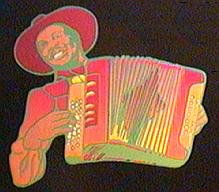 |
||||||||
My Hometown on the World Wide Web
Opelousas, Louisiana 70570 History of Opelousas Settled in 1720 by the French "Coureur de Bois" (runners of the woods, hunters and trappers)
who used the area as a trading post and as a rest stop for travelers going to between Natchitoches and New Orleans, Opelousas is located midway between a section
of highway called the Acadiana Trail. (US 190 from Port Allen to the Texas State line.) In 1763-64 Louis Pellerin, who was a french officer stationed at the Opelousas Poste,
acquired a land grant to establish a permanent settlement at Opelousas. In 1803, Opelousas was part of the great Louisiana Purchase, and became territory of the United
States of America. In 1812, Louisiana was admitted into the union and became a state in the United States of America. In 1821, the city of Opelousas was incorporated.
However, long before the French settlers arrived, the area of land was always called Opelousas. What remians of exactly how the area came to be called Opelousas is only
available through legends, so the complete story is still not completely told. The legends refer to the three tribes of Indians that dwelled along the high bluff that is now called the
Grand Coteau Ridge. These three tribes, (The Opelousas, the Choctaws, and the Alabamans) were constantly at war with a very fierce and cannibalistc tribe called the
Attakapas. The three tribes, held a council meeting, and decided to try to wipe out the Attakapas tribe. Together the three tribes waged war and finally succeeded in driving the
Attakapas from their land, forcing them to eventually seek refuge in the region of what is now called St. Martin parish.
The three tribes were victorious, and a pact was made to give the abandoned land of the Attakaps to the Opelousas Indians. For their main campsite the Opelousas indians choose
the high land of where the present day city now resides. The name Opelousas has been given many meanings, but one of the most commonly accepted is Black Leg
... possibly because the tribe painted their legs a dark color or had dark legs in contrast with their light bodies. Other translations are: Black Foot... Black Foot... Man with Black Leg or
Black Water. Once the seat of the state capitol, when Baton Rouge was occupied by Federal Troops in 1863, Opelousas is now the parish/county seat in St. Landry parish due to its central
location in the parish. With its old courthouse, to the new development occuring along the southside, Opelousas has proven itself as a leader of the area with the new improvments
that have been taking place to the older downtown district. Areas of Interest
The Jim Bowie Museum Visitors to the area can see the site of the Bowie residence on South Union Street, visit the
Jim Bowie Oak on Landry street, and also visit the Jim Bowie Museum on Highway 190 East, at the Opelousas Tourist center. The Palace Cafe Located downtown in the Historic District, the Palace Cafe offers authentic cajun cusine, a
classic traditional diner, that has built a solid reputation with the locals, and is always full of locals (mostly lawyers and such) around lunch time. The Yambilee Festival Occurs in celebration of the Yam harvest (the last weekend of October), the Yam Festival is a week-long festival that includes the crowning of the Yam Queen, selecting a Yambilee King, selecting Mr. and Mrs Yam, (the Yam KIng and Mr. and Mrs. Yam selected by the board of directors for her/her contribution to the developement and growth of the sweet potato industry, selecting a Parade Marshall selected by the Board of Directors from individuals active in the area business world (civic and volunteer organizations), The Yam Teens Pagent 12-17 years old (selected by judges), Junior Royalty at least 8 and not older than 11 by October 31, again selected by judges, selecting King and Queen Yum-Yum ages 0 months to 7 years, selected by judges, judging of the Yam-i-mals (odd shaped yams decorated to represent animals insects, birds etc..), to the Yam parade on Sunday that takes place the length of Landry Street, starting at the extreme east end of town, and ending at the Yam festival grounds, on the extreme west end of town. The Zydeco Festival Opelousas is the birthplace of Zydeco and Clifton Chenier, King of Zydeco, was born in the FESTIVAL DATES September, 5, 1998 |
||||||||
Send comments or suggestions to: Marcus Fontenot All Pages Created By Atchafalaya Computer Consulting
The Displaced Cajun's Homepage ©Copyrighted 1995-99 by Marcus Fontenot |
||||||||
|

 city. The community joins in the celebration each September when the Zydeco Festival, a noon to midnight affair, is held near-by in Plaisance,
La on the Saturday before Labor Day. Featuring 13 hours of intense, rythmic music, this unique cultural festival features regional cuisine, Africian-Americian arts and crafts, and demonstrations by non-profit
organizations and local businesses. One of the primary goals of the Southern Development Foundation, a nonprofit social organization which organizes the festival, is to exhibit the black folk
culture of Southwest Louisiana. The attendance of the festival soars each year, which is now in its 13th year.
city. The community joins in the celebration each September when the Zydeco Festival, a noon to midnight affair, is held near-by in Plaisance,
La on the Saturday before Labor Day. Featuring 13 hours of intense, rythmic music, this unique cultural festival features regional cuisine, Africian-Americian arts and crafts, and demonstrations by non-profit
organizations and local businesses. One of the primary goals of the Southern Development Foundation, a nonprofit social organization which organizes the festival, is to exhibit the black folk
culture of Southwest Louisiana. The attendance of the festival soars each year, which is now in its 13th year.







